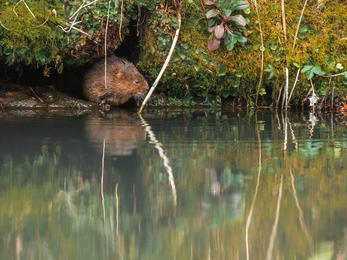|
Charity urges public to report signs of rare Water voles
Water vole -Nick Mott
Staffordshire Wildlife Trust are urging members of the public to help track Water voles in the county.
Identifying Water Voles
The water vole has chestnut-brown fur, a blunt, rounded nose, small ears, and a furry tail. It is much bigger than other vole species. Scotland’s water voles often appear darker, with many having a black coat.
The similar brown rat is larger, with grey-brown fur, a pointed nose, large ears that protrude from its fur, and a long, scaly tail.
More info here




